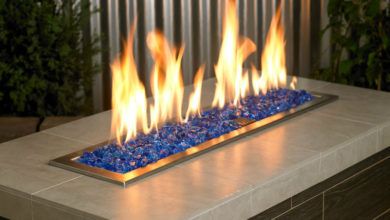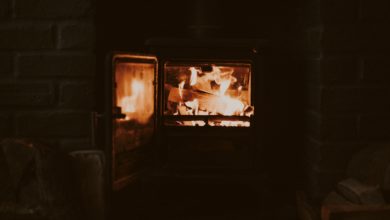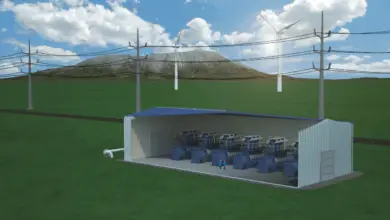Global warming is a thing and it will do the earth a service if we are aware of its implications. The effects are evident in the depleting ice caps and the extra scorching sun.
A diversion of our thirst for energy towards renewable energy will go a long way in reducing global warming.
The two sources of renewable energy that have been developed well enough to be made available on a consumer scale are wind and solar. This explains why they are so popular in most parts of the world.
One question alternative energy professionals say they get asked the most is, “which is better for me between wind and solar?”
There isn’t a direct answer to this as there are factors that may affect which of them is best for you. Joins us as we explore some of these factors to support your understanding.
But before we proceed, let us do a quick introduction of the two contestants:
Wind
The wind is exploited for energy with the use of wind turbines. This monolith of a device is often erected where there is sufficient wind speed. As the blades rotate, the power the movement generates is converted into the type of energy that can be used in households.
Solar
Solar on the other hand involves using photovoltaic panels to capture light from the sun, which is then converted into electricity.
Wind Vs Solar
Even though they are both available for free in nature, it is not advisable to just jump on either of them to serve your home or business. Some of the factors you need to consider are as follow:
Geographical Location
Wind: If you don’t have that much wind speed where you’re located or you’re residing in an urban area with many other towering structures, wind energy is not such a good idea. One of the main reasons wind turbines tower high is to prevent the wind from getting obstructed by anything. You need an open space or at least not have many structures nearly as high as your wind turbine.
Solar: It’s great to have a futuristic-looking house with solar arrays covering your roof. Or if there is ample space where you can set up a solar panel farm, have photovoltaic cells lined up in numbers. But it is a huge waste of time and money if you stay in an area that does not get enough sunlight.
Energy Output
Wind: When investing in renewable energy supply, the company responsible for the installation will often have to predict the energy the system will output.
It is a bit trickier to get this prediction correctly with wind energy because of some factors (as mentioned above). These factors could make the wind speed in one particular location significantly different from another just one mile away. For this reason, you might not be able to accurately determine how much energy you can generate.
However, you will not face this issue if you get the location right. With an open space in a windy area that has a favorable terrain and no high structures, wind turbine sure is the way to go.
Solar: The energy production of a solar power installation is quite predictable. Since the light from the sun comes from above, there isn’t much of an obstruction to sunlight.
It is easy to predict the solar irradiance of a large geographic area. That way the inherent risk of a solar power system is quite low. The energy output prediction of a solar installation rarely varies by much.
Cost Per Kilowatt Produced
Wind: It takes significantly more to install a wind energy system that will produce the same amount of power as a solar energy system. That is even when there is a decent wind speed of about 12mph. A Solar energy system costs much less to implement, even after factoring depreciation.
One high side of wind is that it is more lucrative if you are considering energy supply on a utility scale.
Installation
Wind: Wind turbine installation is a little bit complicated in the sense that it cannot be installed just anywhere. One thing is that it is not ideal to erect a wind turbine unless it is at least 30 feet above anything that is within a 500 feet range. Obviously, that is a huge constraint in an urban setting.
Solar: Solar panels can be mounted pretty much anywhere, you just need to make sure they are facing the sun. On the ground, in an open field, on the roof, etc. You can get as creative as you want with mounting solar panels. This is one huge advantage solar has over the wind.
Maintenance
Wind: The amount of maintenance and its procedures often depend on the manufacturer of the turbines. Some that are designed with more movable parts require more maintenance than those with fewer moving parts.
Maintenance is often scheduled yearly and manufacturers indicate that in the user manual. So, if wind energy is more suitable for your needs, be sure to pay attention to that part of your manual.
Solar: Maintenance is also scheduled yearly. But the extent of maintenance for solar power systems is quite low compared to turbines. If you are using solar arrays that don’t use battery backup, you will have even less maintenance to do.
Tightening bolts, cleaning the panels, and making sure the connections are intact are pretty much all the maintenance you will need to do.
Longevity
Renewable energy, whichever one you choose, is still quite an investment. So, you don’t want it dying on you after a short while.
Wind: Generally, wind turbines are designed to last for up to 25 years. But some manufacturers claim theirs can last up to 40 years. No one is expected to pay so much money for a product without a warranty. Wind turbine manufacturers often offer warranty anywhere between 5 to 10 years. They also schedule annual maintenance to help extend the lifespan.
Solar: Photovoltaic cell manufacturers offer a warranty of around 25 years on their panels. The warranty on most inverters, on another hand, varies between 10 to 25 years. A typical solar panel is estimated to have a lifespan of not less than 30 years.
This estimate holds true as long as you are dealing with a manufacturer with a pedigree that has proven reliable over time.
Wind turbines can generate some noise, sometimes up to 100dB. This is another reason it might not be applicable in urban areas. Even local authorities might not give you the clear due to the nuisance of noise it might cause.
Wind turbines can generate a lot more electricity per kWh than solar panels. Solar panels are also known to emit more CO2 into the atmosphere than wind turbines.
Even though wind and solar energies are not yet developed enough to tussle with fossil fuels, they are still worth the investment.
Not only will you be decongesting the grid, you will also be playing a significant role in reducing pollution. You can be proud of yourself for being environmentally responsible.





